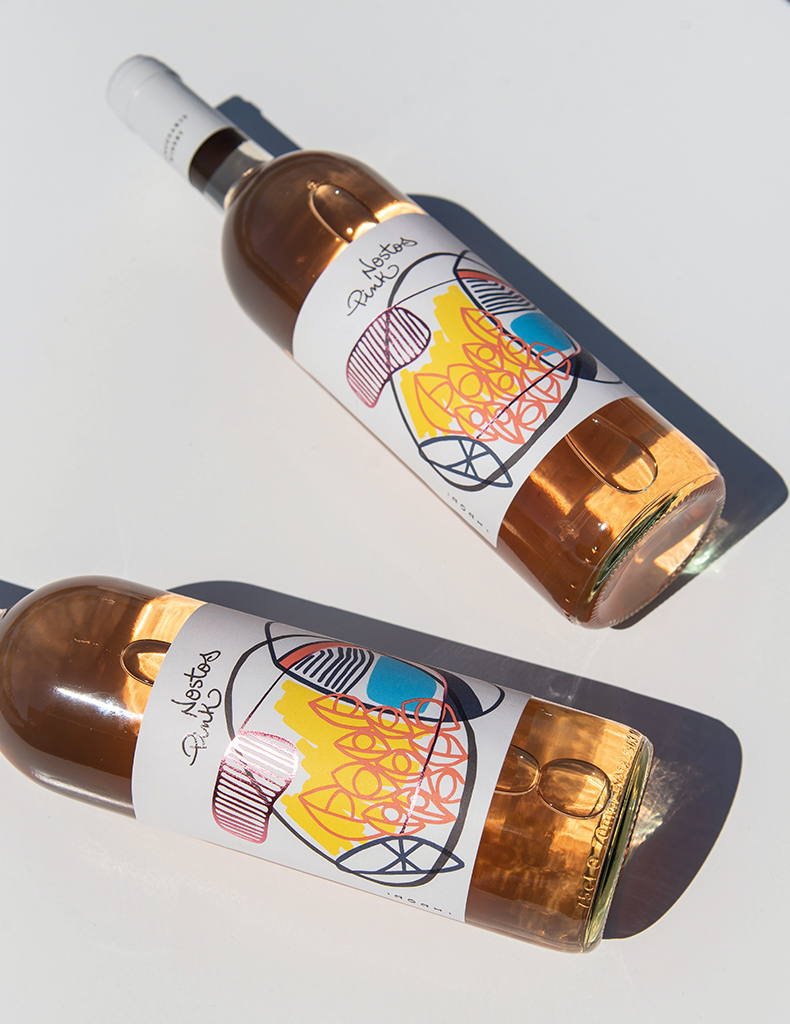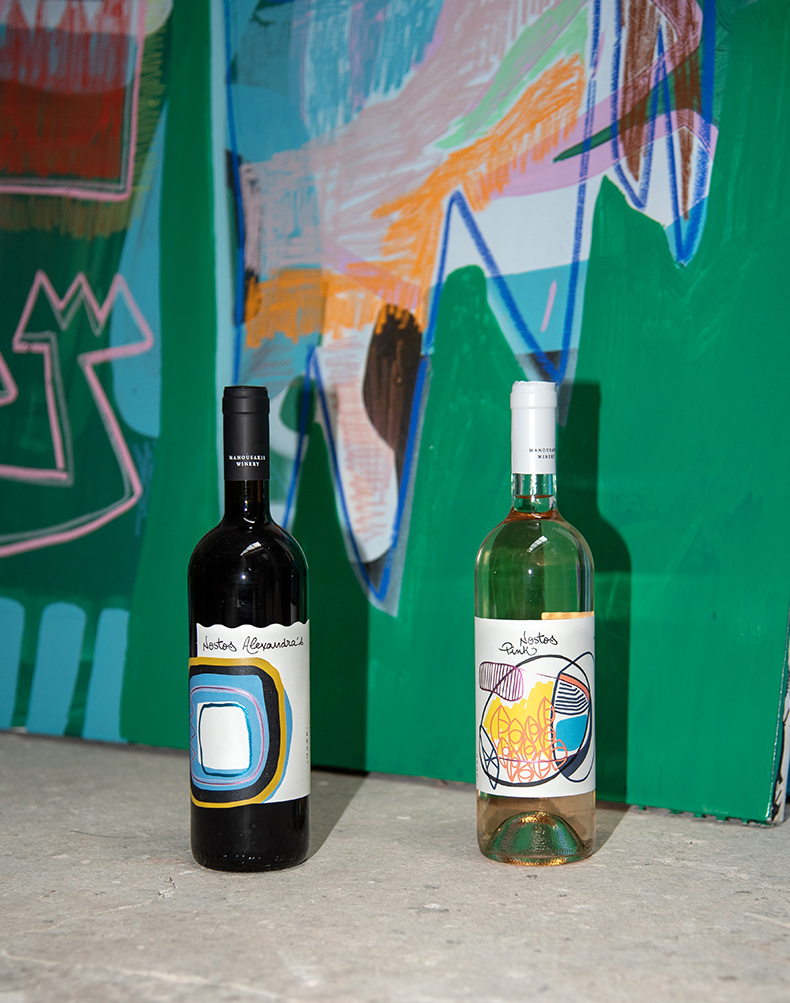From the May 2024 issue of Apollo. Preview and subscribe here.
Crete is its own country within a country. As the largest and most geographically diverse of the Greek islands, it has hosted many civilisations: the Minoans, the Phoenicians, the Mycenaean Greeks, the Byzantines, the Venetians, the Ottomans, even the British – each leaving its mark on the island, together creating its distinctive character. The island’s cosmopolitan nature was identified even in Homer. In the Odyssey, Odysseus speaks of ‘a land called Crete, amid the wine-dark sea, a fair, rich land […] and therein are many men, past counting, and ninety cities. They have not all the same speech, but their tongues are mixed.’
Archaeological evidence on the island shows how important wine was to this polyglot community as far back as the Bronze Age: poised youths in the Procession Fresco at the Minoan palace of Knossos, painted around 1500 BC, carry amphorae and vessels for wine. Inscriptions in the ancient Linear A and later Linear B alphabets record wine production, storage, distribution and trade.
In the 20th century Cretan viniculture suffered war and the late arrival of phylloxera, which decimated vines in the 1970s. But from the 1980s production accelerated, with appellation areas established in 1989. At present, more than 12 per cent of Greek wine comes from Crete. Quality has not always been consistent, but in recent decades a new generation of winemakers has changed that, determined to make world-class wines on a terroir-driven basis, using local methods and materials. The Manousakis Winery, one of the best in Greece, has been instrumental in driving improvement since the 1990s. Established in 1984 by Theodore Manousakis on the isolated hills of Vatolakkos, it is among the few north-facing vineyards in the northern hemisphere.
Manousakis – ‘Ted’ – did not start out as a winemaker. Having left his homeland at the age of 11 for the United States, he returned later to take over family land. He solicited the help of renowned international wine industry figures including rootstock experts, viticulturists and winemakers to reinvent Cretan wine. Manousakis plants white and red Rhône varietals, with the Roussanne grape being especially successful on Greek soils, along with homegrown varieties including Vidiano, Vilana – both native to Crete – Assyrtiko and Romeiko. Each year, he produces more than 100,000 bottles and greets 40,000 visitors to the winery.

Nostos Pink rosé bottles with a label designed by Alexandra Manousakis. Photo: Vicky Tsatsampa
The wine series is called Nostos – the name is taken from the ancient Greek word for ‘return’, used in respect of Odysseus and other heroes, which provides half of the meaning of ‘nostalgia’. The concept is more than a marketing label: it is bound up with the question of what ‘homeland’ means and how a wine can express identity through terroir.
Greek heroes returned and told their stories: similarly, Alexandra Manousakis, the founder’s daughter, returned to Crete from the United States in 2007 to take over the family business. A trained artist, she has deployed her talents for painting and ceramics, as well as design, to explore contemporary Cretan identity’s links to the past. Her interest in those connections was triggered by a visit to Knossos, where one of the archaeologists asked her what she thought the single most important artefact of the entire excavation might be: something so precious it was not even on display in the museum. ‘It was a seed. Yes, a seed […] and I was completely deflated,’ she recalls.
Before the Minoans, humans were largely nomadic, travelling and searching for food. When they arrived on the island, these prehistoric people planted seeds and began to cultivate food; to reap what they had sown, they had to stay put – and so civilisation began. ‘I needed to find a way to make this point through the art and the winery,’ Manousakis says. She was also inspired by a quotation by the 19th-century American lawyer and statesman Daniel Webster, which Grant Wood used as the title for his pastoral murals of 1934 at Iowa State University: ‘When tillage begins, other arts follow.’

Nostos wine bottles with labels designed by Alexandra Manousakis. Photo: Vicky Tsatsampa
She studied vessels and pottery at the archaeological museum in Heraklion, giving ancient designs a contemporary interpretation in her own ceramic practice, in her paintings and on wine labels. She incorporated symbols such as those inscribed on the Phaistos Disc, which dates to the second millennium BC, with glyphs including vines, papyrus, axes and spirals – these last omnipresent on Minoan pottery, buildings and frescoes.
For Alexandra Manousakis, Crete’s long history ‘colours every single aspect of what society does and doesn’t do here: how they celebrate, how they drink wine […] You just take it for granted that in Crete, drinking wine is very specific to the rituals and histories of the past, you just feel it’s done differently here.’
Greece’s modern wine industry is in its infancy compared with other parts of the world. But the new winemakers, on Crete and elsewhere, are committed to philoxenia – the Greek tradition of deep hospitality – and to sharing their wines more widely. Given Manousakis’s interest in reinterpreting Crete’s visual history for modern times, there will be much to draw upon, as well as much to drink.
From the May 2024 issue of Apollo. Preview and subscribe here.













![Masterpiece [Re]discovery 2022. Photo: Ben Fisher Photography, courtesy of Masterpiece London](http://zephr.apollo-magazine.com/wp-content/uploads/2022/07/MPL2022_4263.jpg)
‘Like landscape, his objects seem to breathe’: Gordon Baldwin (1932–2025)